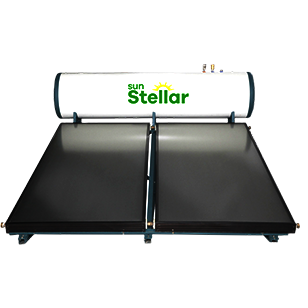Hot water has become a necessity for a lot of household chores these days. Whether you are running a laundry load, washing dishes during the cold months, or taking a hot shower, you will require hot water to serve the purpose. However, heating the water consumes a lot of electricity; that’s where the importance of a solar water heater swoop in! It is an ideal way of saving your utility bills. In this blog, we will delve deeper into understanding what a solar water heater is and how it works. For more information, stay tuned with us till the very end!
What Is a Solar Water Heater?
A solar water heater (also referred to as a solar geyser) uses solar energy to heat water. When compared to traditional gas water heaters and electric heaters, a SWH is an environmentally friendly and cost-effective solution. Below are some of the perks of a solar water heater. Take a quick look at the pointers mentioned:
- Environmental Sustainability: By installing a solar water heater system in your home, you will be able to rely less on fossil fuel resources and reduce greenhouse gas emissions. Take a step toward environmental conservation today.
- Cost-effective Solution: While installing a SWH might add to the initial costs, it will help you reduce your electricity bills and prove to be cost-effective in the long run.
- Low Maintenance: The best part about a solar water heater is that they are extremely easy to maintain. Enjoy hassle-free ownership and a reduction in operational costs.
- Energy Independence: With a SWH, you no longer need to rely on a gas supply or grid electricity. Instead, it is an independent source of energy that solely relies on the sun’s rays.
How Does a Solar Water Heater Work?
A solar water heater has 5 major components, including:
- Solar collectors
- Storage tank
- Heat exchanger
- Controller system
- Backup Heater
Let’s now understand how these solar water heaters actually work.
- Collectors
The solar thermal systems come well-equipped with panels, also referred to as collectors; these collectors are installed on your roof. When the solar power, or sunshine, passes through the glass covering of a collector, it strikes an absorber plate. These plates contribute to capturing the energy and converting it into heat. The heat that is generated is then passed on to a ‘transfer fluid; the fluid passes through small pipes fitted inside the plates.
These collectors are available in a wide range of sizes. The number and sizes of collectors depend on your regular water usage and your roof’s exposure to the sun. You can choose between two styles: evacuated tube and flat tube. Flat tubes are affordable and capture less solar energy. On the other hand, evacuated collectors are capable of capturing more heat, but they are also fragile and heavier.
- Storage Tank and Heat Exchanger
The transfer fluid moves into a ‘heat exchanger’ (a series of pipes) after heating up in the installed collectors. When this heated transfer fluid fills the pipes, the heat is then passed on to the water, thus making it hot and ready for various household applications (pool heating, preparing food), etc.
- Controller System
Every solar water heater comes well-equipped with a controller system, they are in charge of ensuring the water doesn’t get too heated up.
- Backup Heater
There is a backup system installed in every solar water heater system. They are used for generating hot water on less sunny, cloudy days.
To End With
Solar water heaters are the perfect blend of sustainability, economic viability, and innovation. Offering a plethora of benefits to the users, these systems reduce the ecological footprint and embrace renewable technologies. If you are looking forward to installing these systems, all you have to do is look for service providers with years of experience and profound knowledge. You can scroll through the internet, jot down the top-ranking services, check out the testimonials and reviews, and opt for a face-to-face consultation. Ensure your peace of mind with expert guidance, and take a step toward reducing your utility bills in the long run.
